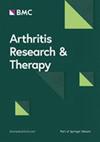使用贝利木单抗治疗系统性红斑狼疮患者:一项单中心真实世界回顾性研究
IF 4.9
2区 医学
Q1 Medicine
引用次数: 0
摘要
研究贝利木单抗治疗系统性红斑狼疮(SLE)的有效性和安全性,为临床治疗提供有价值的参考。在这项回顾性研究中,我们选取了2020年3月至2022年9月来我院就诊的101名系统性红斑狼疮患者,其中56人患有狼疮性肾炎(LN)。所有患者均接受了贝利木单抗联合标准护理(SoC)治疗方案52周以上,并记录了他们的临床/实验室数据、疾病活动性评估、糖皮质激素用量和不良反应发生情况。狼疮低疾病活动状态(LLDAS)和DORIS缓解是系统性红斑狼疮治疗的首要目标。根据系统性红斑狼疮疾病活动指数 2000(SLEDAI-2 K)对各组进行分类:SLEDAI-2 K < 6 为轻度组(轻度活动),SLEDAI-2 K ≥ 6 为活动组(中度-重度活动)。上述两组患者的病情分别用 SELENA-SLEDAI 爆发指数(SFI)和系统性红斑狼疮反应者指数-4(SRI-4)进行评估。此外,我们还将肾脏完全缓解(CR)和部分缓解(PR)作为LN患者疗效评估的标准。使用贝利木单抗治疗52周后,患者的补体水平显著升高(P<0.05);与治疗前相比,24小时尿蛋白定量和每日糖皮质激素剂量等其他指标均有所下降(P<0.05)。52 周时,(i) 经评估,全组患者病情均有明显改善;(ii) 55.4%的患者达到 LLDAS 缓解,23.8%达到 DORIS 缓解;(iii) 73.2%的 LN 患者达到 CR,16.1%达到 PR。15名患者(14.9%)出现了不良反应,在对症治疗后,所有不良反应均恢复正常。总体而言,在使用贝利木单抗治疗期间,系统性红斑狼疮患者的免疫和生化指标得到改善,LN患者的尿蛋白水平降低,肾功能缓解率有效提高;同时,使用贝利木单抗的副作用发生率低,总体耐受性好,安全性高。本文章由计算机程序翻译,如有差异,请以英文原文为准。
Use of belimumab in treating patients with systemic lupus erythematosus: a single-center, real-world retrospective study
To investigate the efficacy and safety of belimumab in the treatment of systemic lupus erythematosus (SLE) in a real-world setting and provide a valuable reference for clinical treatment. In this retrospective study, 101 patients with SLE who came to our hospital from March 2020 to September 2022, 56 of whom with lupus nephritis (LN), were selected. All patients received belimumab in combination with standard of care(SoC)therapy regimen for more than 52 weeks and their clinical/laboratory data, assessment of disease activity, glucocorticoids dosage and occurrence of adverse events were recorded. Lupus Low Disease Activity State (LLDAS) and DORIS remission as a primary goal in the treatment of SLE. The groups were classified according to the Systemic Lupus Erythematosus Disease Activity Index 2000 (SLEDAI-2 K): SLEDAI-2 K < 6 was categorized as the mild group (mild activity) and SLEDAI-2 K ≥ 6 was categorized as the active group (moderate-severe activity). The disease of the two groups mentioned above were assessed using the SELENA-SLEDAI Flare Index (SFI) and the SLE Responder Index-4 (SRI-4), respectively. Furthermore, we used complete remission (CR) and partial remission (PR) in the kidney as the standard for efficacy evaluation for LN patients. After 52 weeks of treatment with belimumab, patients’ complement levels increased significantly (p < 0.05); Other indicators such as 24-hour urine protein quantification and daily glucocorticoids dose decreased compared to pretreatment (p < 0.05). At 52 weeks, (i) after evaluation, the whole group of patients showed significant improvement in their condition; (ii) 55.4% of patients achieved LLDAS and 23.8% achieved DORIS remission; (iii) 73.2% of patients with LN achieved CR, 16.1% achieved PR. Adverse reactions were observed in 15 patients (14.9%), all of which normalized after symptomatic treatment. In general, during treatment with belimumab, immunological and biochemical indices improved in SLE patients, urinary protein levels were reduced in LN patients, and the rate of renal function remission was effectively increased; At the same time, the use of belimumab is associated with a low frequency of side effects, good overall tolerability and a favorable safety profile.
求助全文
通过发布文献求助,成功后即可免费获取论文全文。
去求助
来源期刊

Arthritis Research & Therapy
RHEUMATOLOGY-
CiteScore
8.60
自引率
2.00%
发文量
261
审稿时长
14 weeks
期刊介绍:
Established in 1999, Arthritis Research and Therapy is an international, open access, peer-reviewed journal, publishing original articles in the area of musculoskeletal research and therapy as well as, reviews, commentaries and reports. A major focus of the journal is on the immunologic processes leading to inflammation, damage and repair as they relate to autoimmune rheumatic and musculoskeletal conditions, and which inform the translation of this knowledge into advances in clinical care. Original basic, translational and clinical research is considered for publication along with results of early and late phase therapeutic trials, especially as they pertain to the underpinning science that informs clinical observations in interventional studies.
 求助内容:
求助内容: 应助结果提醒方式:
应助结果提醒方式:


